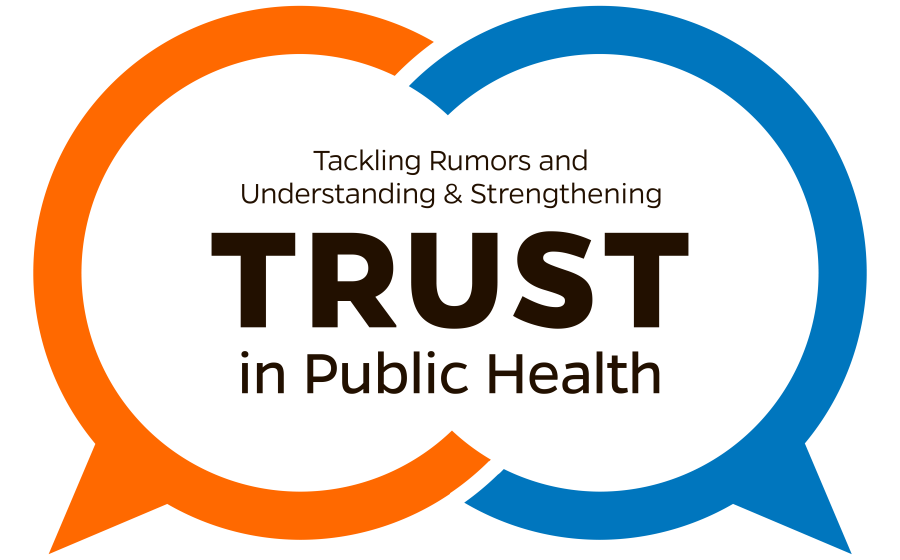
Checklist to Build Trust, Improve Public Health Communication, and Anticipate Rumors During PHEs
This checklist is an instrument to help public health departments and communicators improve trust and communication, especially in anticipation of serious public health issues, health emergencies, and when misleading rumors are abundant. To develop the checklist, the project team collected data on frequently observed rumors during public health emergencies (PHEs), interventions to address such rumors and improve trust, and the experiences of 100 key informant public health experts and practitioners working on the front lines. The checklist reflects current communication science and the voices and lived experiences of public health communicators who have worked in an environment of persistent rumors and declining trust in public health.
The checklist provides public health communicators with tools, resources, and internal advocacy opportunities organized across 5 priority sections. These sections can be broadly described as 1) focusing on internal operations, 2) building connections with the community, 3) establishing opportunities with “secondary messengers,” 4) anticipating loss of trust in a PHE, and 5) creating meaningful and accessible messages.
- Priority 1 outlines how health departments or similar organizations can reflect on and improve their in-house capacities, including budgetary, administrative, and workforce considerations, as well as assess their current understanding of and relationships with their communities. These capacities will help set up health departments for success before undertaking new trust-building or public health communication initiatives.
- Priority 2 describes how health departments can look outward to develop healthy, lasting relationships with their communities in order to build trust. These connections will help to increase the effectiveness of future public health work.
- Priority 3 recommends processes for health departments to develop successful, sustainable partnerships with and/or otherwise leverage individuals, organizations, or other influencers in their communities—all of whom fall under the umbrella of “secondary messengers.” By combining forces with outside help, health departments can strengthen community ties, tap into new resources and expertise, and increase the effectiveness of public health communication and trust-building activities.
- Priority 4 suggests specific proactive initiatives that health departments may engage in before and as PHEs or other concerning health narratives arise. These actions help to preserve trust levels and dampen the negative effects of anticipated rumors.
- Priority 5 provides guidance on how to develop, tailor, deploy, and evaluate public health messages during PHEs or concerning health narratives. This section builds off strengths and capacities established in previous Priority sections. Advice from this section is summarized in, and can be applied to, the Tailoring Tool to Increase Message Uptake & Trust.
Users are encouraged to modify and alter the checklist in ways that reflect their specific needs, challenges, and opportunities. Users may explore the checklist in its entirety or utilize a targeted approach by checking off their existing capacities found at the top of each Priority section and reading select sections associated with identified gaps or areas of interest.
Download the full checklist Download the condensed checklist
The Checklist: Priority 1, 2, and 3
Dr. Tara Sell, Christina Potter, and Vanessa Grégoire outline necessary capacities needed for health departments to build trust and improve public health communication during public health emergencies.
The Checklist: Priority 4 and 5
Dr. Tara Sell, Christina Potter, and Vanessa Grégoire describe approaches that health departments can deploy to preserve community trust and improve public health communication during public health emergencies.

